Revisiting Las Piñas Bamboo Organ Church and its Convent Museum
It took me awhile to revisit the Bamboo Organ Church in Las Piñas. The last time I went to visit the church and the museum was in 2015 (Check: The Famous Las Piñas Bamboo Organ Church). Although I was able to visit a Santo Niño Exhibit last 2019, I didn’t get enough chance to explore the church. Early this year, i decided to visit the church prior to its Bamboo Organ Festival.

The simplicity of the church never failed to amaze me. It comes with a simple façade and is not as huge as other nearby churches like the Saint Andrew Cathedral or even the Baclaran Redemptionist Church in Parañaque. Despite the simplicity, the church has a huge historical significance. The famous adobe brick style which can be found on both exterior and interior design of the church served as an inspiration behind the so-called Las Piñas Historical Corridor project that started in 1997 in an attempt to restore the old town Las Piñas. This is the reason why most landmarks in Las Piñas features this signature adobe-like walls.
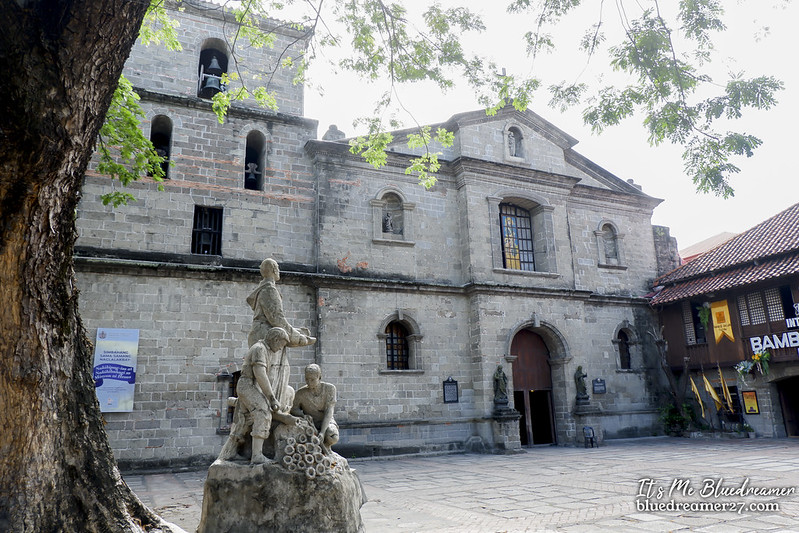
It was November 5, 1795 when the Archbishop of Manila assigned the small town of Las Piñas to the Augustinian Recollects to build a new church. Fray Diego Cera de la Virgen del Carmen, a native of Spain, traveled from Mabalacat, Pampanga and arrived on the town on the day after Christmas of 1795. Since then, the talented and skillful priest revolutionized the simple barrio of farmers and fisherman into a successful town. He started building the church made from adobe (volcanic) stones in the Earthquake Baroque architectural style and the first stone church was completed in 1819.

The original image of Tata Hosep and the Santo Sepulcro
The church was dedicated under the patronage of Saint Joseph who is commonly referred to by the locals as Tata Hosep. The old image of Saint Joseph along with the statue of dead Christ (Santo Sepulcro) were actually bought from San Dionisio, Parañaque in the amount of 2 dozen eggs.
Like most old churches, Saint Joseph Parish also underwent several restoration. It was destroyed by earthquakes numerous times in 1829. It was then restored by Padre Diego Cera. Many years later, an attempt to restore its 19th century look was made. This restoration that took place between 1971 to 1975 was lead by architect Francisco “Bobby” Mañosa and Ludwig Alvarez through the administration of Rev Fr. Mark Lesage. The walls and the Bamboo Organ were the remaining parts of the original church. The newly restored church was inaugurated on December 3, 1972. The original framework were retained – complementary additions were executed. It features capiz chandeliers, aged bricks, old statues, bamboo ceiling, a choir loft with antique balustrades of carved wood and potted native palms.
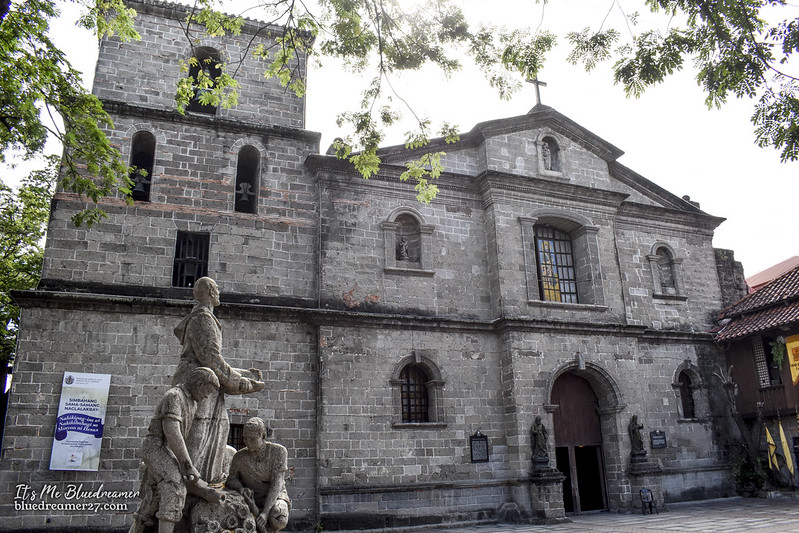
The facade of the church is simple. It comes with multiple niches featuring stained glass windows and stone statues of various saints.
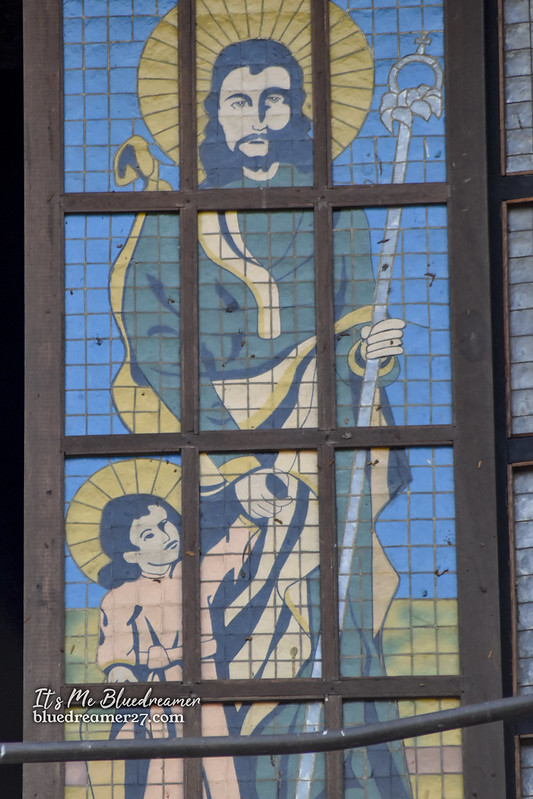
The central niche of the facade with the image of Saint Joseph
The center of the facade features a large window made of Capiz with a painted image depictingSaint Joseph.
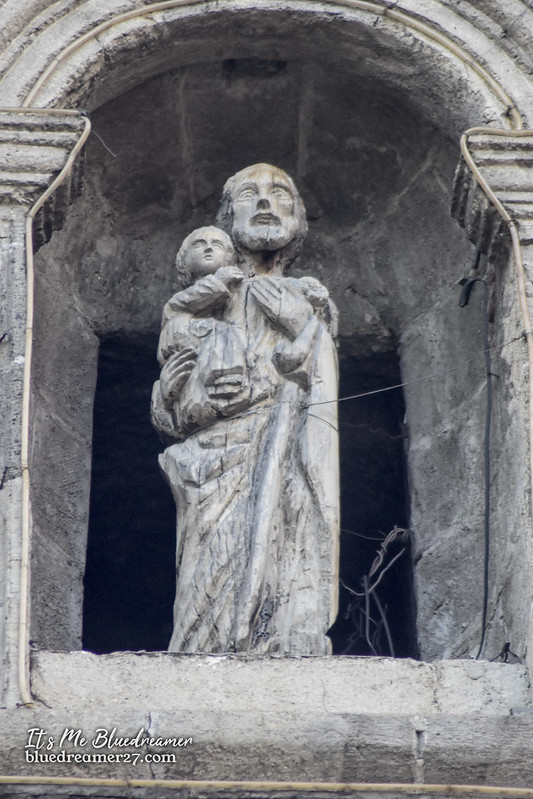
The image of Saint Joseph in the pediment
The pediment also features a statue of the town’s patron saint.
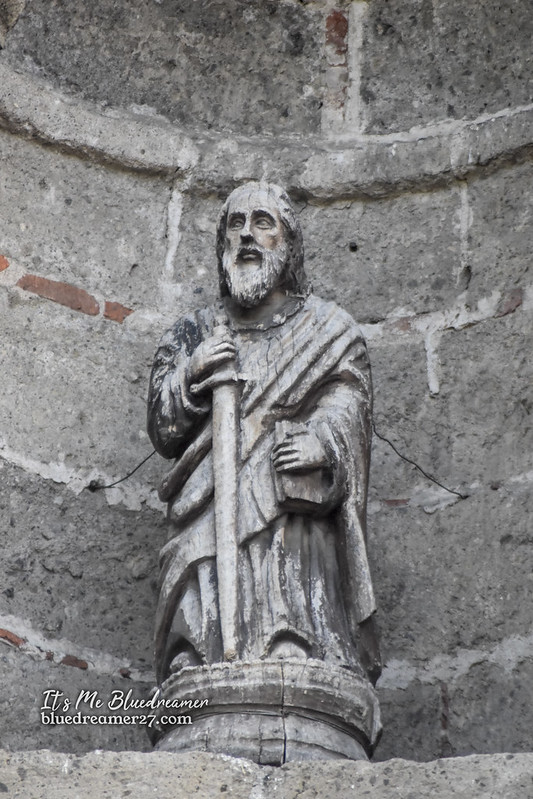
Statue of Saint Paul

Another old wooden statue in the facade which i assumed is Saint Peter.

There is also a couple of newly added statues near the main entrance of the church, another attempt to restore its old facade.
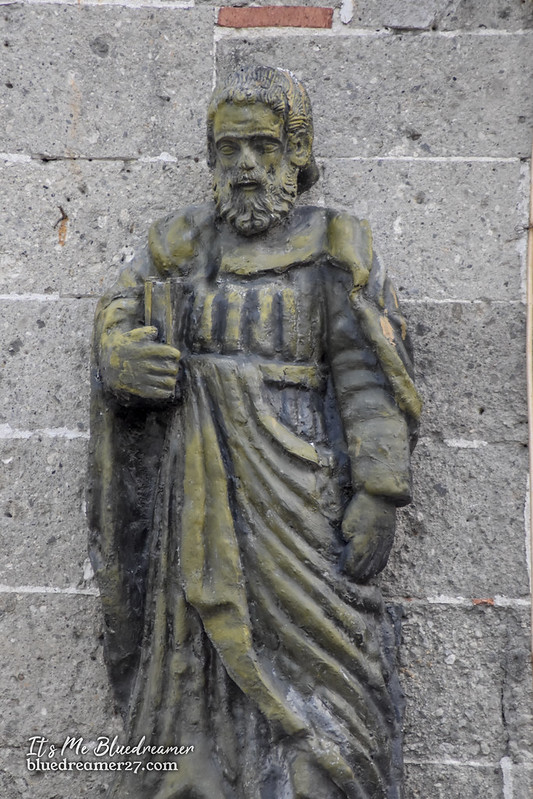

Outside the church is a monument dedicated to Padre Diego Cera

The Padre Diego Cera monument
The Famous Bamboo Organ
Padre Diego Cera is more than just your typical priest. He is a gifted chemist, natural scientist, architect, and a talented organist. He is also an organ builder and the man behind the organs of some of the churches in the old Intramuros including the Manila Cathedral, San Agustin Church, and the old San Nicolas de Tolentino Parish. Of course, he is also behind the famous Bamboo Organ of Las Piñas which is now considered a National Cultural treasure.

The famous bamboo organ of Las Piñas
Fr. Diego Cera started with the construction of the bamboo organ in 1816 and it was finished eight years after in 1824. During the 1880s, there was a typhoon and earthquake that damaged the roof of the church, which left the bamboo organ open to nature’s elements. The rainwater and stones got inside the organ case, which destroyed the instrument and made it unplayable for years. After that, the pipes were stored in the old sacristy and were forgotten about until around 1917 when a tourist rediscovered its beauty.
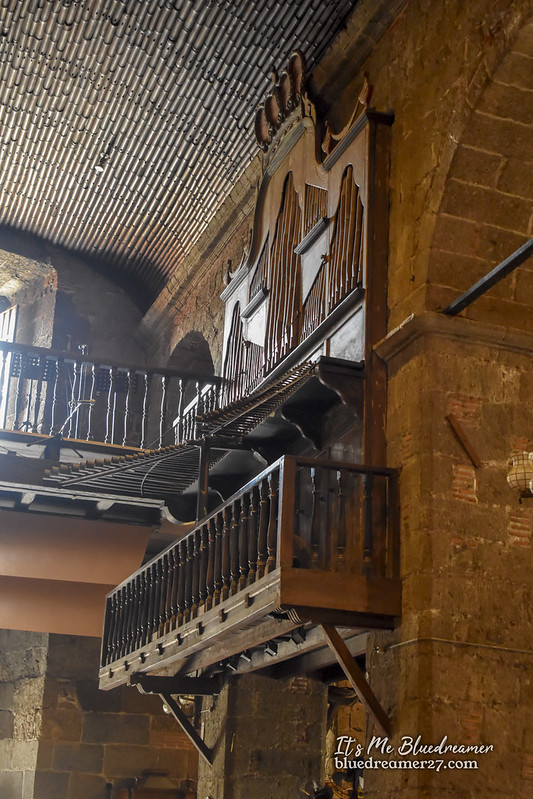
It was only in 1972 when the bamboo organ restoration project began. Johannes Klais Orgelbau was the one who was awarded the contract, and he had the organ shipped all the way to Bonn, Germany in 1973. After about a couple of years, the bamboo organ returned to its homeland in 1975 (the newly restored church was also inaugurated at the same time).
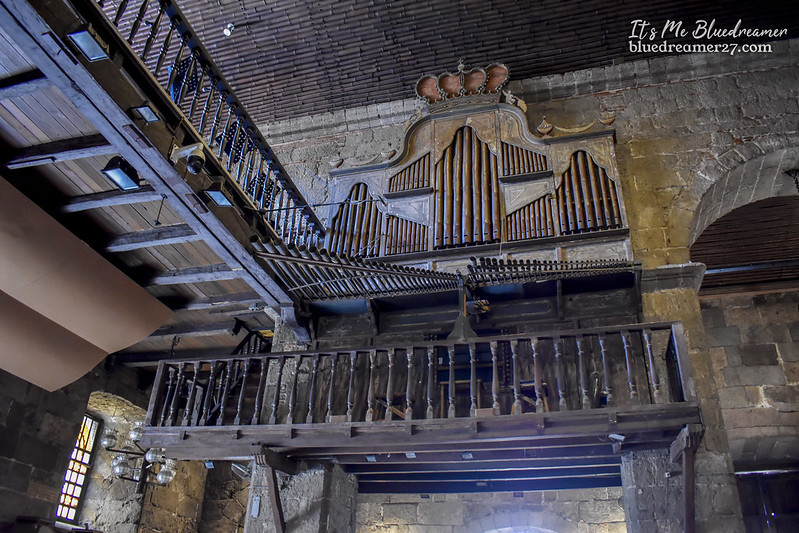
The annual International Bamboo Organ Festival, a music festival of classical music, was started to celebrate the music of the reborn instrument and its unique sound. Since 1992, Prof. Armando Salarza has been the titular organist of the Bamboo Organ. He is also the Artistic Director of the International Bamboo Organ Festival, now the longest-running annual international music festival held in the country.The organ was declared a National Cultural Treasure of the Philippines in 2003.

a Historical marker declaring the Bamboo organ as a National Cultural treasure

Upclose view of the organ
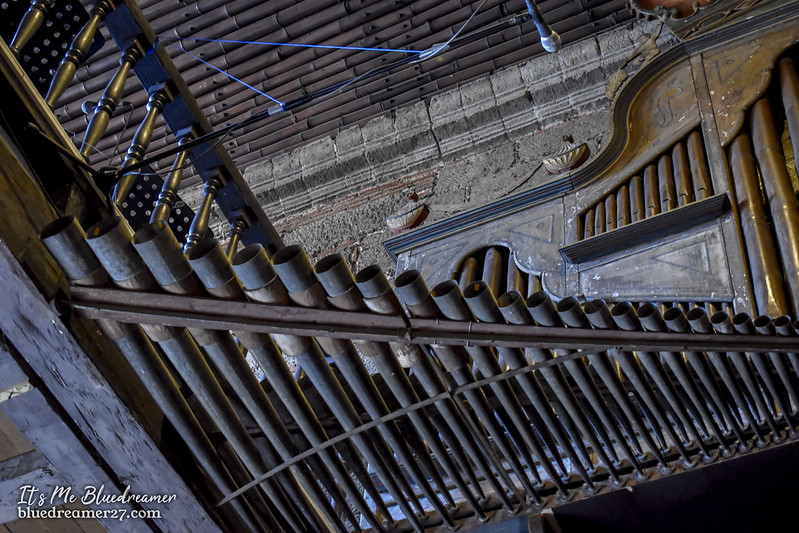
The bamboo organ has a total of 1031 pipes and and 902 of which are made of bamboo

The organ as viewed from the choir loft
The Interior of the Church
The interior of Las Piñas church is equally beautiful. The walls reveal some of the old adobe bricks from the original church. It also comes with three naves.

The main altar of Las Piñas church
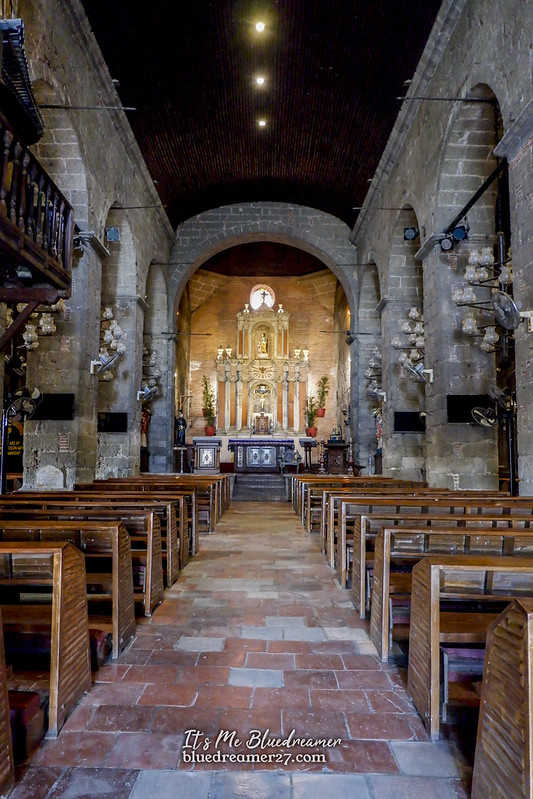
The central nave
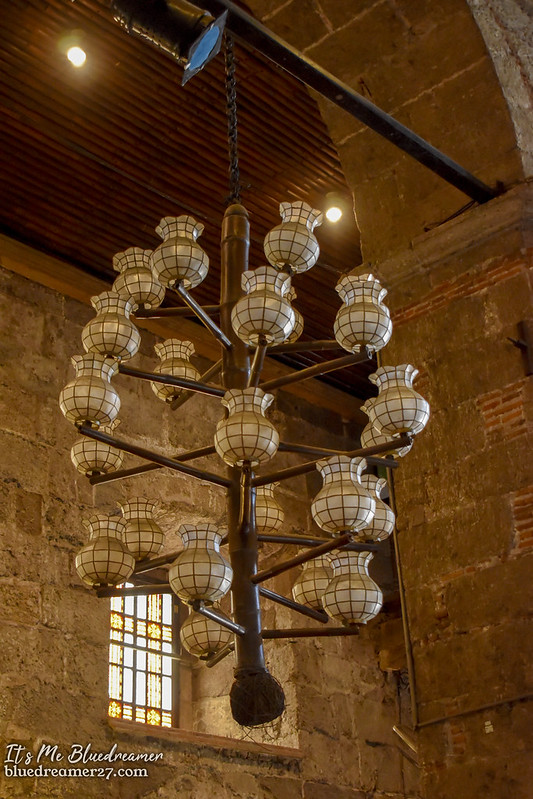 In between each nave are large chandeliers made from bamboo and capiz shells
In between each nave are large chandeliers made from bamboo and capiz shells

The central nave and the main altar as viewed from the choir loft

One of the side naves as viewed from the choir loft

The main altar has two layers. Each has large niche on a center enshrining the Crucified Christ and the image of Saint Joseph and the child Jesus respectively

The image of the Crucified Christ

Saint Joseph and the Child Jesus
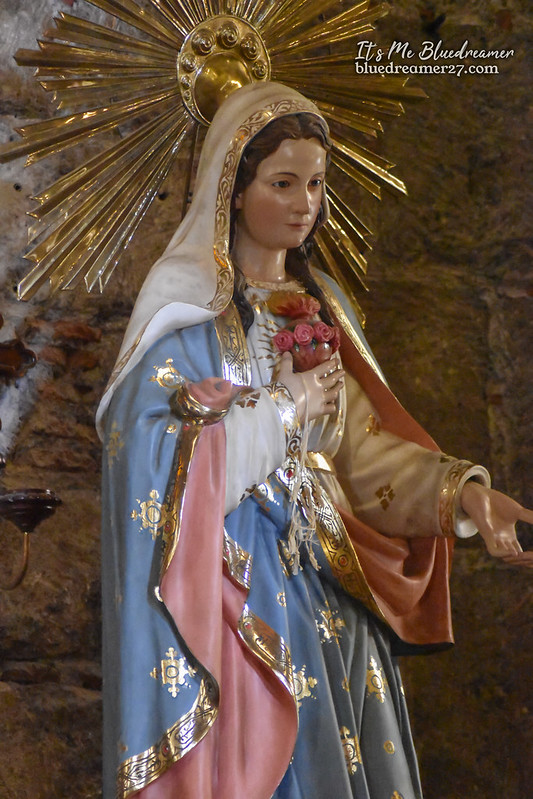
The Immaculate Heart of Mary

Sacred Heart of Jesus

Nuestra Señora de la Consolacion y Correa of Las Piñas Church
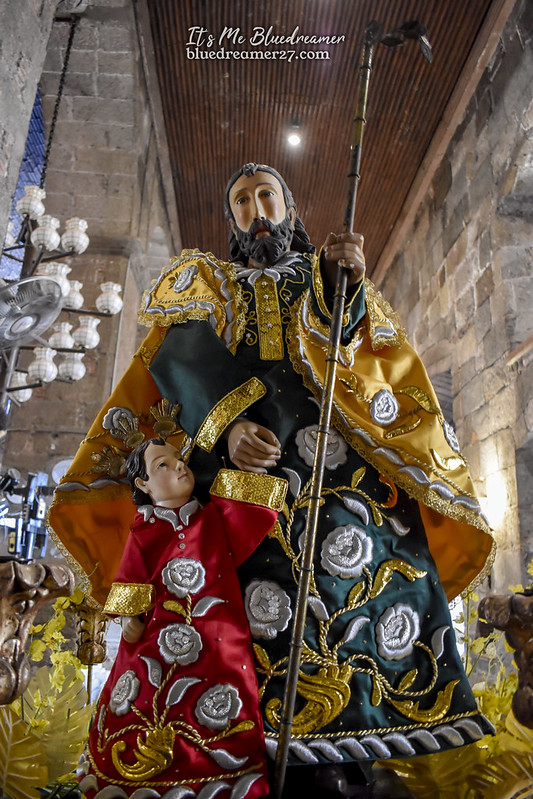
A replica of the processional image of Tata Hosep
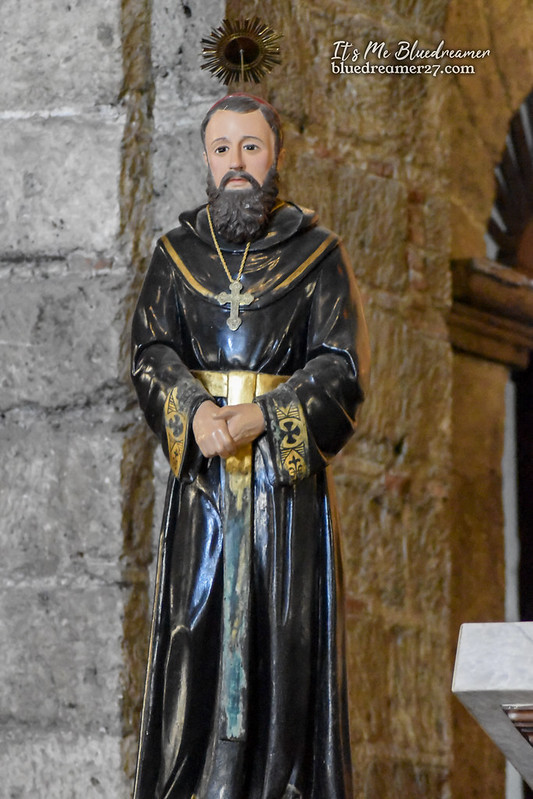
San Ezekiel Moreno
Did you know that Saint Ezekiel Moreno used to be the parish priest of the church during his Philippine mission? In 1876, he worked zealously for the development of the lives of the people in the area. He was even proficient in Tagalog. In honor of Saint Ezekiel, a Santuario de San Ezekiel Moreno was established in Las Piñas

The statue depicting the Baptism of Christ. It is located near the side altar. In front of it is an old baptismal font that were discovered buried in the courtyard of the church. You can check the image here.
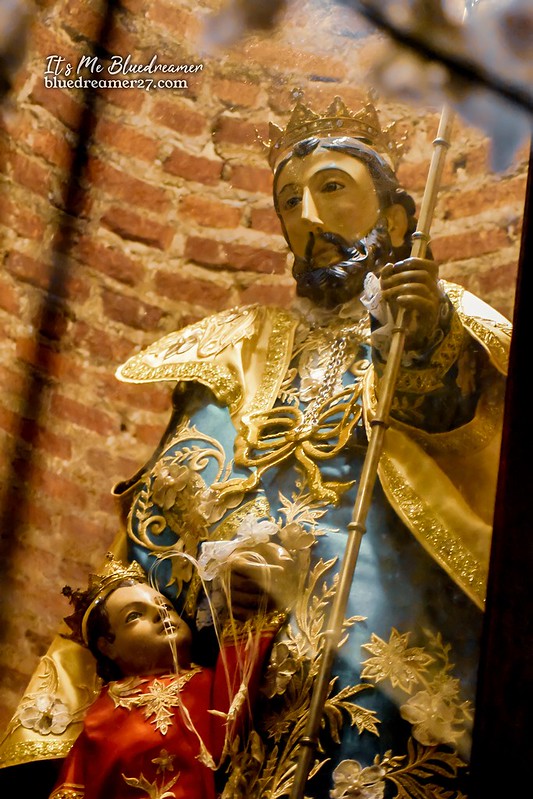
The original image of Tata Hosep

The original image of Santo Sepulcro
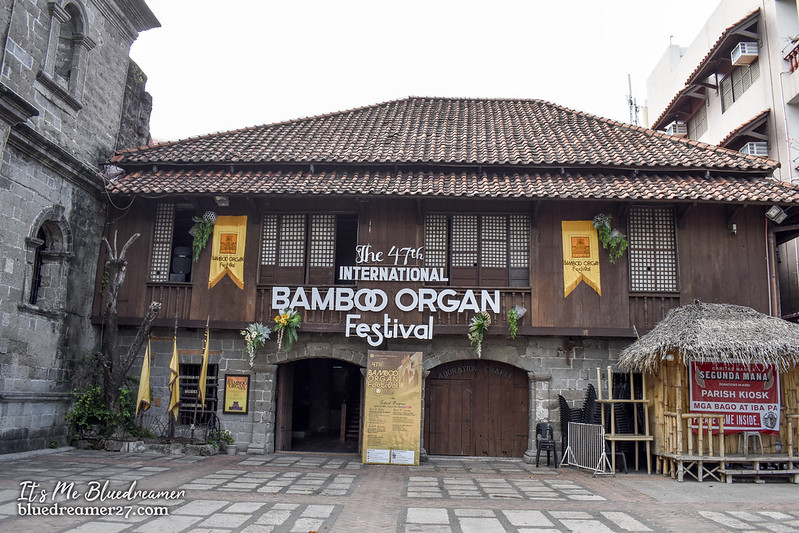
The convent museum of Las Piñas Church
The Las Piñas Church Museum
The old convent house adjacent to the church was eventually converted into a museum. The last time i visited the church in 2015, the museum was under renovation. The tour guide, however, warmly welcomed us and gave us access to the choir loft instead. They also gave us the opportunity to see the bamboo organ in action. Here’s a 2015 video:
Unfortunately, this year, the museum was still under renovation (although i was told that the museum will be completely accessible days before the Bamboo Organ festival). Good thing, they still let me access the Choir loft to see the Bamboo organ upclose. There is just a minimal entrance fee of Php50.

The ground floor of the museum highlights some paintings and an old bell.

An old bell displayed in Las Piñas Church convent museum

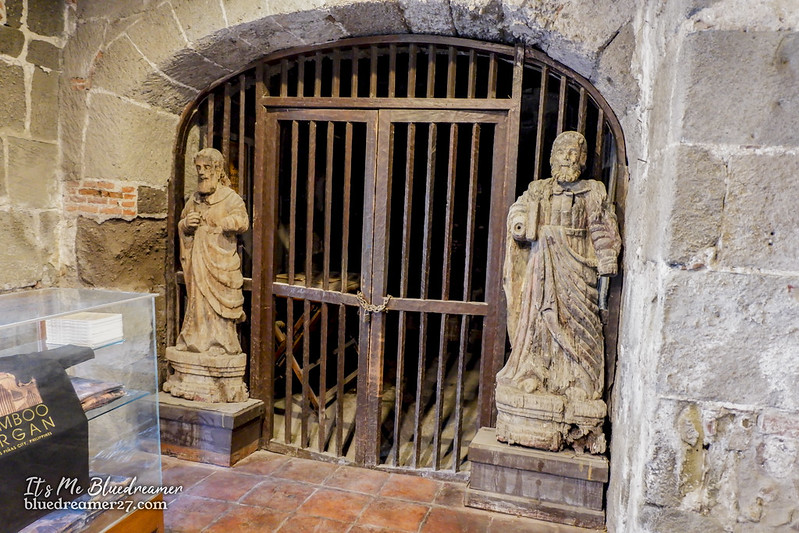
There’s also a cell-like room in the ground floor. It features two old statues similar to the old statues in the facade of the church

One of the wooden statues in the museum
It is not clear which image is this but since he is holding a book, it’s probably one of the four evangelist
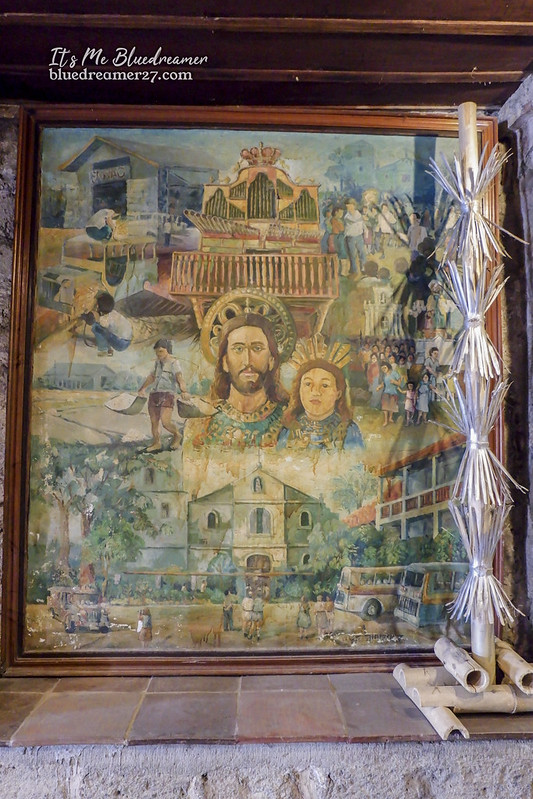
A large painting depicting the rich history of the church and the city of Las Piñas
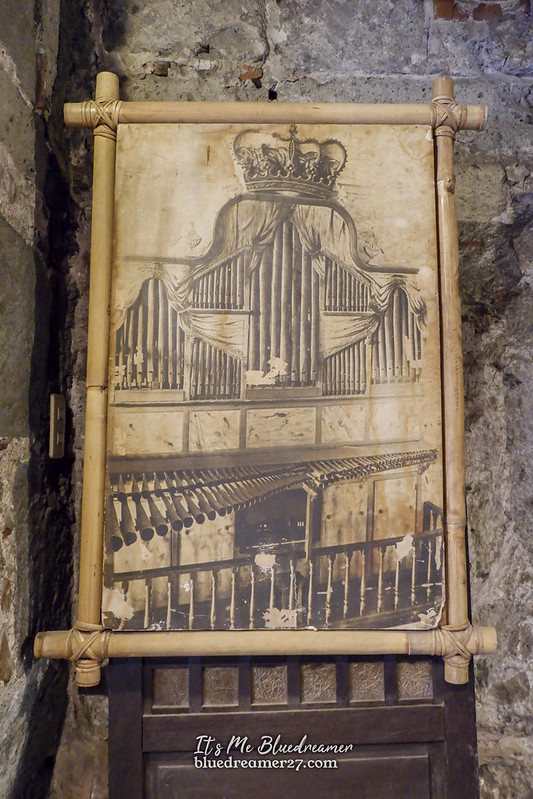
An old painting of the bamboo organ
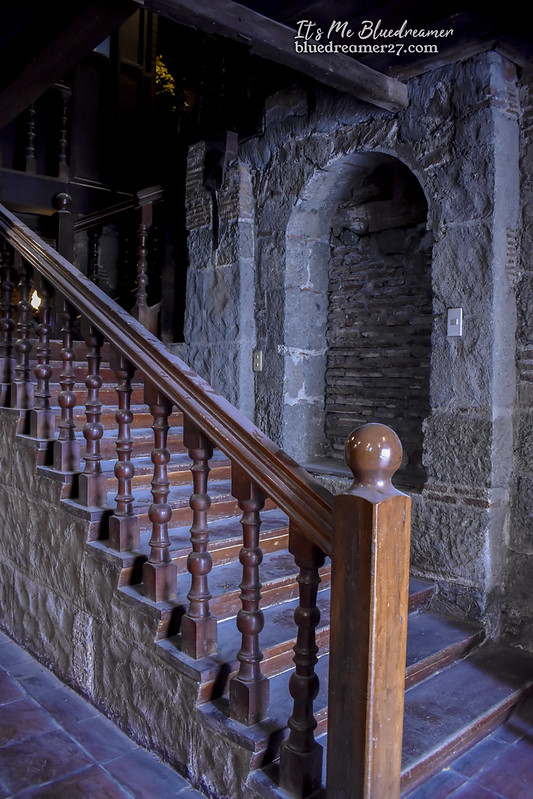
A stairway going to the second floor of the museum

Moving up to the choir loft

A crystal chandelier will welcome visitors as they head to the choir loft
Promotional posters of the Bamboo Organ Festival are displayed on the walls from the first ever festival to the most recent one
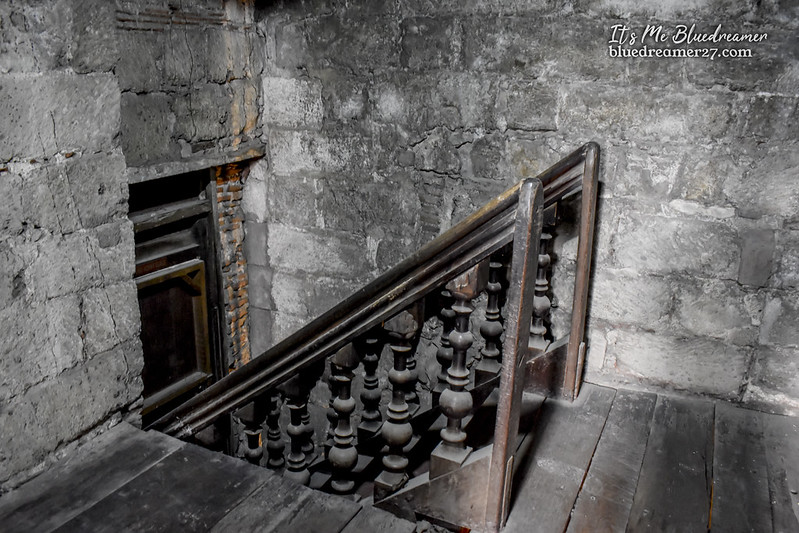
This stairway leads to a rectory that is serves as a guess room for other priests who visit the church especially during the festival

A closer view of the entrance
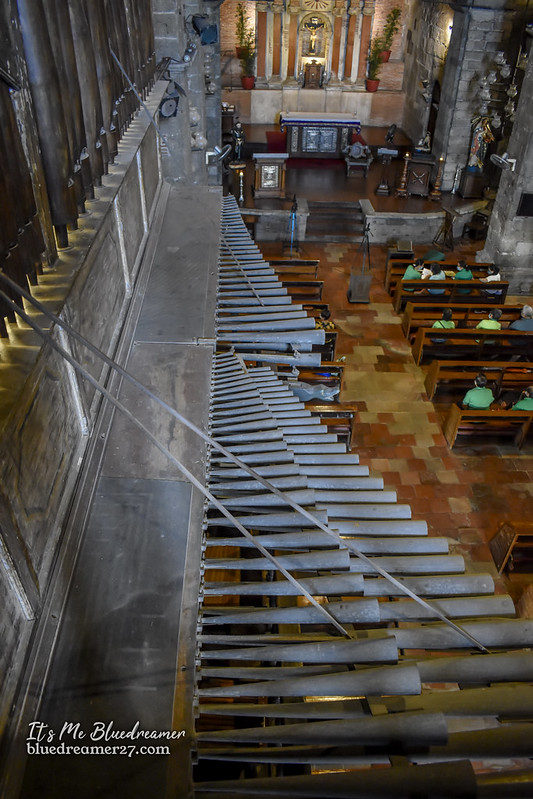
The bamboo pipe organ as viewed from the choir loft

The small space for the organist

Behind the organ are some mechanisms that are necessary to run or operate the instrument

The tiny pipes inside the organ
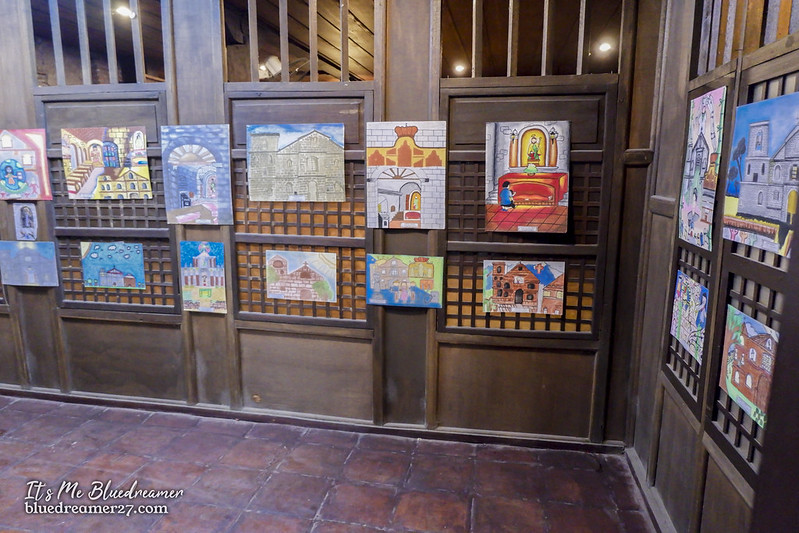
Colorful posters displayed in the museum

The souvenir shop
Things you should know before visiting the Las Piñas Bamboo Organ Church
- The current parish priest is Rev. Fr. Augusto C. Pulido
- The parish is dedicated under the patronage of Saint Joseph
- Tata Hosep’s feast day is every first Sunday of May (the Traditional Feast of the Patronage of St. Joseph in the old Liturgical Calendar) in addition to the his liturgical Solemnity celebrated every March 19th.
- Mass Schedule:
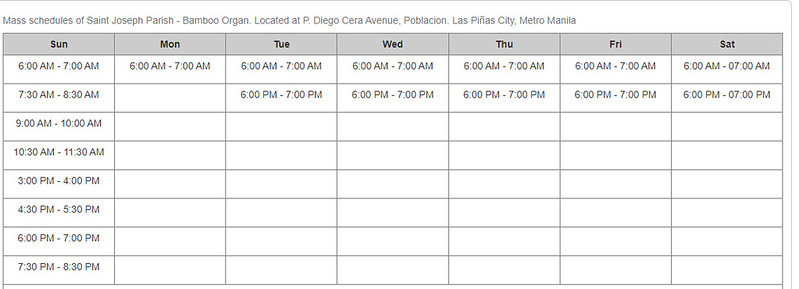
- The entrance fee to the Las Piñas Church museum is Php50 (which includes an access to the choir loft
How to get to the Bamboo Organ Church
- If you are coming from Manila, there are several ways to go to this place. You can take the route via Coastal Expressway, South Expressway or the Quirino Avenue in Baclaran. From Baclaran Church, you can ride a jeepney bound to Alabang (via Quirino). Tell the driver to drop you off the bamboo Organ church.
- If you are coming from Cavite, Ride a bus bound to Zapote (kabila). Drop off at Alabang-Zapote Intersection (the notable landmark is Jollibee Las Piñas). From ther, look for Jeepneys that are bound to Baclaran. Tell the driver to drop you off the Bamboo organ church.
Also check these nearby churches in Las Piñas and Parañaque
- Shrine of Five Wounds of the Lord Jesus Christ (Las Piñas)
- San Isidro Labrador Parish (Las Piñas)
- Santuario de San Ezekiel Moreno (Las Piñas)
- Palazzo Verde/ Fernbrook Garden (Las Piñas)
Data references: LasPinas.gov.ph / Pintakasi /
Check out my vlog about my recent visit to Las piñas Bamboo organ church

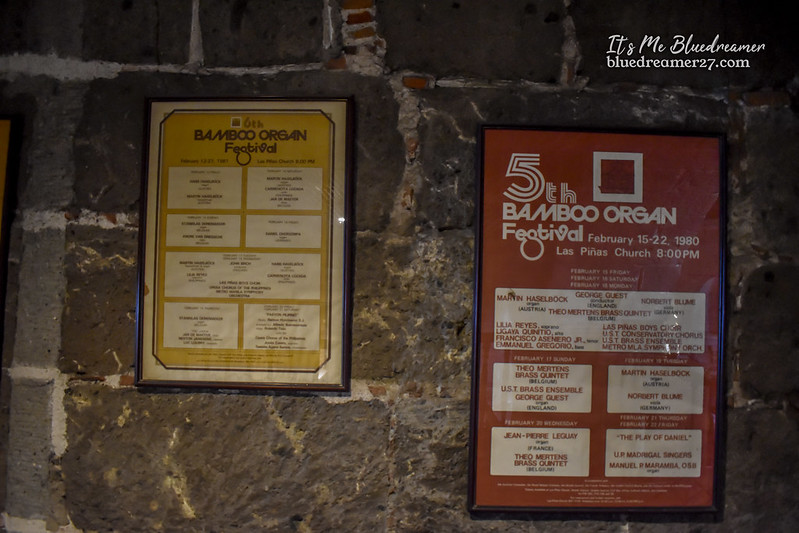



Pingback: The 41st Intramuros Grand Marian Procession / IGMP 2022 - It's Me Bluedreamer!
Pingback: Revisiting the Cathedral Parish of Saint Andrew of Parañaque / Parañaque Cathedral - It's Me Bluedreamer!